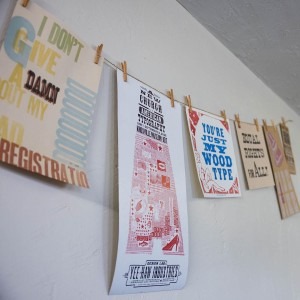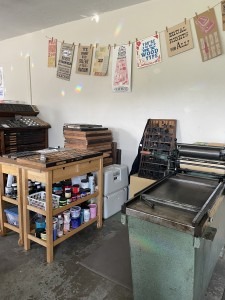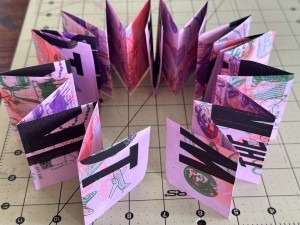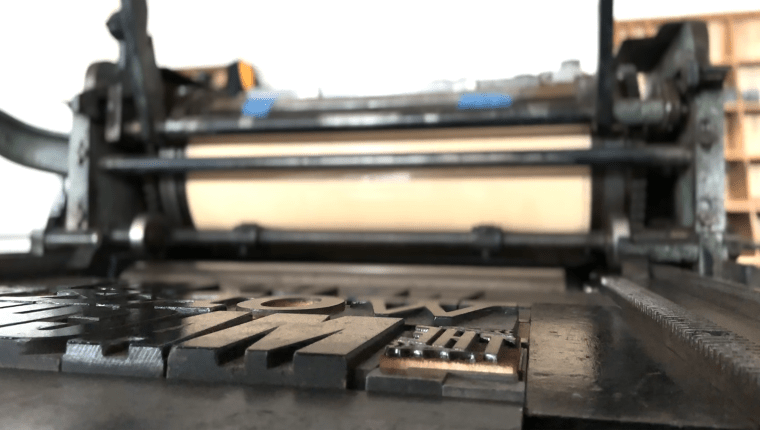I discovered letterpress printing not through graphic design, like many, but through writing and my love of words. As an undergraduate Creative Writing student I was driven to self-publish chapbooks of my poems. Setting my own words in metal type letter by letter clinking into the composing stick is a tedious magic that I have yet to tire of. But like most lovers of letterpress, I also became obsessed with wood type.

Wood has historically been used as a substrate for relief printmaking, dating back to 220 AD in China. Blocks of wood were cut and carved by hand through the same time consuming processes woodcut and linocut artists still use today. Gutenberg’s presses were made entirely of wood, and used to print metal type, known as movable type, which was used to print books, newspapers, and other publications. Type made out of wood became a popular way to make poster-size display typefaces because they were lighter and cheaper than metal. Hatch Show Print in Nashville, Tennessee exemplifies the traditional wood type poster aesthetic.

Hamilton Wood Type, made by the Hamilton Mfg. Co., has been the main producer of wood type in the United States after acquiring all of its competition during the 1890’s. The Hamilton Wood Type Museum in Two Rivers, Wisconsin remains on my letterpress bucket list. Print St. Pete has a collection of wood type, mostly gothic sans-serif forms that pale in comparison to the collections at Hatch or Hamilton. A fun fact: Wood Type is measured in line size, rather than picas or inches, for example, 6-line Gothic.
I’m in love with the playful nature of wood type. Like a child playing with wood blocks, I spend hours at the shop arranging the chunky letterforms to set and print in the bed of the press. There is something experimental about printing with wood type. And at the same time, they’re imbued with history. Antique wood type has knicks, dings, and scratches, imperfections that reveal themselves as they’re rolled with ink and pressed to paper. Wood type has personality, and printing with it takes a certain finesse as well as precision to ensure the blocks don’t get damaged.

Jack Stauffacher’s Typographic Jazz monoprints reimagine off-the-grid wood block printed letters. Other contemporary letterpress artists like David Wolske and Dafi Kühne use wood type in innovative ways by playfully layering printed letterforms. My new work in the upcoming Emerging Artists Exhibition opening May 9th includes wood type proofs from my print series repurposed into mini accordion artists books. In this form, the wood type printed on folded pages become abstract shapes, obscuring the original message entirely. As I continue in my printmaking practice, I intend to further explore using traditional materials like wood type combined with more experimental printing techniques.






